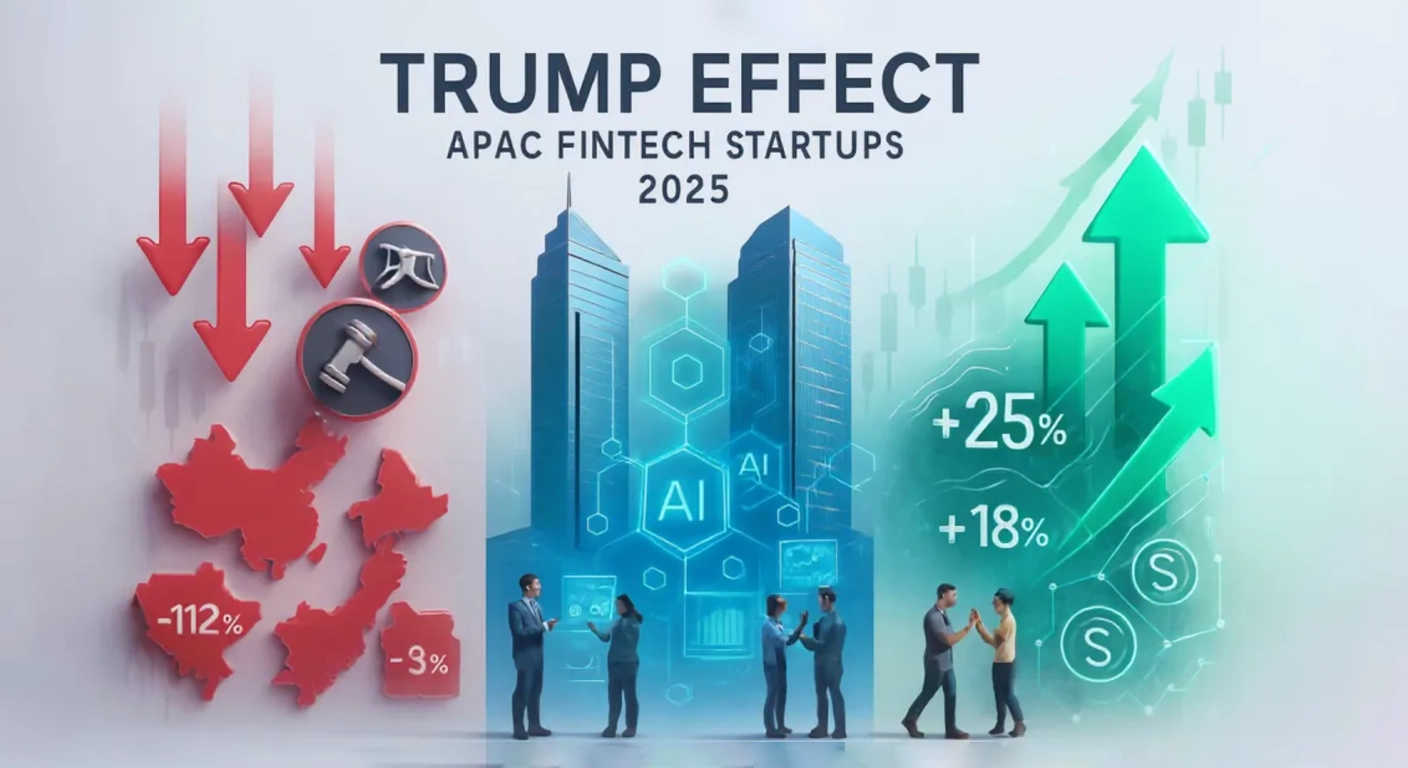A Tale of Two Markets: AI Feasting & Selective Climate Tech
Remember when “diversification” meant trailing bets in fintech, SaaS or maybe some biotech? Simpler times.
If you’re viewing the Q3 2025 numbers as we are, you’re feeling two competing emotions: breathless awe at AI’s $45 billion quarterly billings and trepidation wondering if the climate tech positions in your portfolio could get left behind. Spoiler: neither emotion tells the whole story.
Let’s cut to the chase and get to what matters: how do you, as a disciplined investor, reposition your strategy when one sector is attracting 51% of global venture funding while another recapitulates?
Trend #1: The AI Gravity Well – Too Big to Ignore, Too Concentrated to Trust
Here’s the headline that’s been sending shockwaves through boardrooms from Singapore to San Francisco: AI startups have taken the majority of global VC funding for the first time ever. Not by a narrow margin — we’re talking about 51% of every venture dollar with $192.7 billion into AI this year alone.
- The numbers are nothing short of extraordinary:
- – $45 billion went to AI in Q3 2025 (46% of quarterly funding)
- – $13 billion to Anthropic alone
- – Average deal sizes up 28% year over year
- – North America sucks up 70-85% of AI capital
However, this concentration is establishing a two-tiered market: There is the mega-round committee (Series B+ with at least $100M in ticket size), and then there is the seed stage – where, sadly, valuations have simply not adjusted at the same correction you hoped they would.
Advisory Takeaway – if you can’t land deals on foundation models yet, develop a strategy that redirects the focus to AI infrastructure, or to “applied AI” (these terms are interchangeable). Think data tooling for energy grid management. AI agents in compliance-heavy industries. Or, vertical SaaS with AI-native workflows. Because these are segments where far smarter capital investors are taking a 10x angle with these theses, without involving Stripe-like valuations.
How does your AI allocation strategy look right now? Are you sipping the foundation models and raising as competitively as possible? Or is there a strategy related to building out a more defensible infrastructure in your future? Drop us a line – we are seeing really fascinating bifurcation patterns across our own portfolio.
Trend #2: Climate Tech’s “Healthy Recalibration” (AKA: The Strong Survive)
While artificial intelligence is the prom queen, climate technology is the valedictorian who just got waitlisted at Harvard. Q3 2025 saw the lowest VC engagement in climate technology since the early 2020s, but make no mistake, it’s not crashing.
This is a selectivity surge. To be clear, investors are not abandoning decarbonization; they’re asking for what really they should have demanded in the first place — scalability, commercialization, and measurable impact. The age of “growth at all costs” is dead. Long live “profitability with purpose.”
Here is what is working in climate technology right now:
- Late stage stability: These are mature companies in their later stage with de-risked technology and clear paths to market (e.g. Vemo, clean mobility in Mexico, Remora aquaculture robotics in Norway)
- Enabling technology: Grid efficiency tools, energy resilience platform and manufacturing optimization, or in other words any of the things to make the energy transition actually happen
- Cross border deals: 6 of the top 10 pre-seed/seed deals are US based, but in the late stage winners are coming from other geographic regions.
The Warning Sign: Climate venture investment activity at the pre-seed and seed level has decreased significantly. If you are in pre-seed and seed climate investments, start asking difficult questions about the path to commercial success. Are they FOAK (First-Of-A-Kind) projects with a credible scaling strategy, or slick science experiments with carefully crafted pitch decks?
The Opportunity: All of this has created a buyer’s market for business focused and discipline investors. The best climate opportunities are now looking more like industrial technology than startup moonshots – which is a good thing for risk-adjusted returns.
When is the last time you stress tested your climate portfolio for true commercial viability compared to pure impact metrics? Our Investor Excellence program includes portfolio diagnostics that have helped LPs avoid write-downs of $50M or more this year.
Trend #3: The Mega-Round Phenomenon – Concentration Risk in a Tuxedo
Here is an uncomfortable fact: 23% of all Q3 venture deals were AI deals, but they received 46% of the dollars. Meaning fatter checks and less risk of concentration for fund managers chasing DPI.
What this means for your thesis:
- Seed has curious resiliency: $9B across 3,500+ companies in seed suggests the long tail of innovation is still alive.
- Series A/B are where values crystallize: Larger rounds ($80M+ for AI-native revenue platforms like Reevo) mean earlier markups but also higher burn rate.
- Late stage is now the new public market: With IPO windows reopening, late stage deals are becoming liquidity bridges instead of growing fuel.
- Advisory consideration: Are you building a portfolio of 20-30 positions, or concentrating in 5-7 “conviction plays”? The data suggests the latter approach will win in 2025, assuming you can get deal flow to gain access to mega rounds.
If you are struggling with access, consider this: maybe the best returns are actually in “uncool” sectors – biotech ($15.8B in Q3), hardware / quantum ($16.2B), and fintech infrastructure ($12B). These sectors are all growing rapidly, without valuation inflation with AI.
Trend #4: Singapore’s Position & The Geographic Arbitrage Play
As a company based in Singapore, we pay attention to this. The U.S. obtained $60 billion (approximately 2/3) of global venture capital in Q3, and even among AI financings, 85% of those proceeds were invested in U.S. companies. With that said, Singapore’s ecosystem continues to develop advantageous players in the areas of fintech, biotech, and enterprise SaaS without much notice.
The emerging playbook:
- Source in Singapore & Southeast Asia as valuations are still 30-40% lower than Bay Area comparables.
- Syndicate with the U.S. leads to leverage their growth capital while maintaining reasonable entry multiples.
- Use Singapore’s regulatory clarity (especially in fintech and with the crypto) as a launchpad for regional expansion.
Recent deal flow supports this: Ripple’s $500M strategic round for crypto infrastructure and Tala Health’s $100M for AI-first virtual care both show capital-intensive models can be built and scaled from APAC – if the proper governance is in place.
What does your geographic allocation strategy look like? Are you treating APAC as a diversification opportunity or seeing it as a national sourcing ground? Our Global Network Access program connects investors to de-risked APAC deals with U.S. co-investment pathways.
The Portfolio Rebalancing Checklist: 5 Actions for Q4 2025
Let’s make this actionable. Here’s what sophisticated LPs and direct investors are doing right now:
1. Conduct an “AI Audit”
Map every portfolio company’s exposure to AI. Not just your AI bucket – but ask: How is your fintech company using LLMs? Is your biotech company using AlphaFold? AI is no longer a sector; it’s infrastructure. In the same way you price risk for being “adjacent” vs. “native” to the AI ecosystem.
2. Stress-Test Climate Positions for FOAK Readiness
Can your climate companies articulate out their First-Of-A-King scale plan? Do they have off-take agreements? Policy tailwinds? If not, perhaps assess trimming position and reallocating to later-stage climate deals currently trading at 2023 valuations.
3. Re-Underwrite Your Seed Strategy
With 3,500+ seed deals last quarter, selection has never mattered more. Focus on founder velocity – teams who can (and are) getting to Series A milestones in 12-18 months, not 24-36 months. The capital efficiency gap that separates good teams from great teams has never been more pronounced.
4. Create “Bridge Liquidity” Reserves
If IPOs pick up in 2026 (as projected by KPMG), you may be able to realize liquidity from late-stage positions sooner than expected. However, they will require bridge capital to achieve that. Reserve 10-15% of your dry powder for insider-led extension rounds in your best positions.
5. Geographic Rebalancing
If you are >70% U.S. exposed, you are over-indexed to mega-rounds in AI. Think about rebalancing to fintech and biotech in APAC (lower valuations, same growth vectors) and climate tech in Europe (better policy support, more patient LPs).
The Questions Keeping Our Investors Up at Night (And Our Answers)
Last week we surveyed 50 LPs in our network. Though every conversation was different, three questions popped up multiple times. Here are the three I heard most often:
Q: “Am I too late to AI?” A: You’re not too late to AI, but you’re too late to foundation models. You are right on time with AI infrastructure and for applied AI in regulated industries. The true “wave” in AI is in deployment, not creation.
Q: “Should I exit my early climate tech positions at a discount?” A: You should only do so if they are not showing any signs of commercial traction within the next 6 months. The best early climate startups have actually been raising money at flat or first down rounds, which is actually healthy. There is no need to panic sell and instead lead insider rounds around normal valuations.
Q: “How should I think about allocating to crypto/web3 after Ripple’s $500M round?” A: Focus on crypto as an infrastructure investment and not a speculative asset. The Ripple round indicates that non-speculative custody and banking will be the next wave of institutional quality crypto, not DeFi protocols. Allocate 5%-10% in picks-and-shovel plays and steer clear of tokens.
Your Next Move: From Insight to Action
Let’s face it: reading trend reports is easy. Taking action on trends without tilting too much on them is hard. The investors who will do well in 2026 will be those who took select concentrated action in Q4 2025 – not those who chased down every mega-round headline.
- At Evolve Venture Capital, we built our Investor Excellence platform for the task at hand. Our data room has:
- Real-time benchmarking of 2,000+ active deals across AI, climate, biotech and fintech
- Direct access to FOAK climate projects with assigned agreements and verified off take
- Singapore-regulation-enabled, crypto infrastructure investments with institutional custody
- Co-invest rights in late-stage APAC (Asia-Pacific) deals being led by Tier 1 U.S. investors.
The market is polarizing into two factions: tourists and architects. Travellers use ChatGPT to take selfies. Architects are building portfolios that will endure the next recalibration.
Which faction are you part of? Let’s talk about your Q4 strategy – our advisory team is offering free portfolio diagnostics to all clients until December 2025.
About the Author
The Evolve Venture Capital Advisory Team works with institutional and accredited investors to develop resilient and high-performing venture portfolios. Based in Singapore, San Francisco, Dubai, India and London, Evolve sources and diligences over 500+ vetted opportunities each year across the AI, climate tech, biotech, and enterprise SaaS sectors.
Links & Sources:








